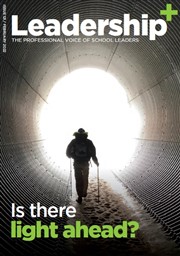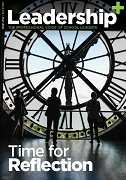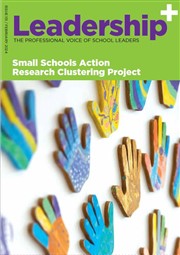IPPN Survey on School Admissions Information Document
- Published: 14 March 2017
The following information has been taken from the DES website - Consultation Paper on The role of denominational religion in the school admissions process and possible approaches for making changes.
1. Catchment area
A catchment area approach would prohibit religious schools from giving preference to children of their own religion who live outside the catchment area ahead of non-religious children or children of other religions who live inside the catchment.
Since there is no statutory basis for the creation of catchment areas, legislative change would be required to underpin a measure based on each religious school having to define a unique catchment area. Legislation would have to reflect the differences between different denominations and religions. For example, there are a very large number of Catholic schools so those schools would serve reasonably small areas. On the other hand, a Church of Ireland school will serve a much larger area. There are two existing Muslim schools in Dublin who potentially would have to effectively divide the greater Dublin area between them.
It would be expected that religious organisations will in many cases base their catchment areas on existing parishes. A related consideration is how to deal with a situation where there are two or more Catholic schools within the Catholic parish, common in urban areas.
For such a system to operate, there would need to be methods in place to ensure that religious schools cannot draw their catchment areas artificially large, such as to allow them fill all their places with children of the same religion, at the expense of local non-religious children/children of other religions. There would probably have to be a rule to say that catchment areas for two schools of the same religion could not overlap – i.e. one house could only be in the catchment area for one school of any one religion.
There would also need to be structures to adjudicate on boundary disputes. Initial work suggests that these should be adjudicated on by the relevant church or religious authorities, who would have to create either nationally or regionally a process to mediate or adjudicate disputes in relation to borders between schools in question. Properly-drafted exemptions will be needed to make provision for Gaeilscoileanna and special schools.
2. Nearest school rule
A ‘nearest school rule’, would allow religious schools to give preference to a religious child only where it is that child’s nearest school of that particular religion.
The Department has some experience of implementing a similar rule in respect of school transport.
Legislative change for the calculation of nearest school distance will need to provide for:
- definitions of starting and arrival points. (e.g. front door or back door of residence or in relation to relevant school’s front door or perimeter fencing)
- measurement of routes (whether footpath and shortcuts through parks, public transport routes and if public road whether by mid-point or average of journey to school to and from)
- whether measurement is based on a standard mapping as distinct from the actual route and mode of transport the child will take which could be a combination of transport modes
- appellate process for distance disputes
This option would avoid some of the complexity of defining catchment areas, but would also require exemptions for Gaelscoileanna and special schools.
3. Quota system
A quota system would allow a religious school give preference to children of its own religion in respect of only a certain proportion of places, meaning that the remaining places would be allocated based on other admissions criteria – proximity to the school, lottery etc. Legislative change will need to include the principles and criteria that will determine what this quota will be set at or the maximum quota could be set in primary legislation. The methods by which the quota is filled will have to be carefully designed so as to avoid a scenario where it is all filled by co-religionists living distant from the school, thus frustrating the objectives.
4. Outright prohibition
An outright prohibition on religious primary schools using religion as a factor in admissions would mean that all places would be allocated based on other factors. Within this approach, there are three sub-options:
- Outright repeal of section 7(3)(c) of the Equal Status Act in respect of publicly-funded primary schools
- Repeal of the first part of section 7(3)(c) of the Equal Status Act in respect of publicly-funded primary schools, but make provision to allow denominational schools to require parents or students to sign a declaration stating that they support, respect, will cooperate with or won’t disrupt the ethos of the school. This could potentially be done by leaving or modifying the second part of section 7(3)(c), allowing a school to refuse “to admit as a student a person who is not of that denomination and, in the case of a refusal, it is proved that the refusal is essential to maintain the ethos of the school”.
- Repeal of the first part of section 7(3) (c) of the Equal Status Act in respect of publicly-funded primary schools, but make provision to allow minority schools to reserve a certain percentage of places for children of their religion.
Children of minority religions make up a very small percentage of the population. Therefore simply removing section 7(3)(c) and requiring minority religious schools to admit based on other criteria, for example proximity to the school would result in many cases in those schools being able to admit virtually no children from their own religion, resulting in those schools becoming in no real sense a school of that ethos.
Provision could potentially be made within this option to allow minority schools to reserve a certain percentage of places for children of their own religion by leaving or modifying the second part of section 7(3)(c), allowing a school to refuse “to admit as a student a person who is not of that denomination and, in the case of a refusal, it is proved that the refusal is essential to maintain the ethos of the school”.
In this way, under sub-option (iii), schools of minority religions if oversubscribed, could potentially be permitted to reserve a certain percentage of places for children of their religion – since they could make a strong case that to do so is necessary to maintain the ethos of the school, since, given the makeup of the overall population, that school would otherwise become in no real sense a school of that ethos.
Questions which arise in respect of sub-option (iii) include:
- what additional protections are required in legislation, if any, to enable this to occur in respect of minority religions only?
- could this be developed in a manner that would be consistent with the constitution, given Article 44.2.4 (“Legislation providing State aid for schools shall not discriminate between schools under the management of different religious denominations”)



















































